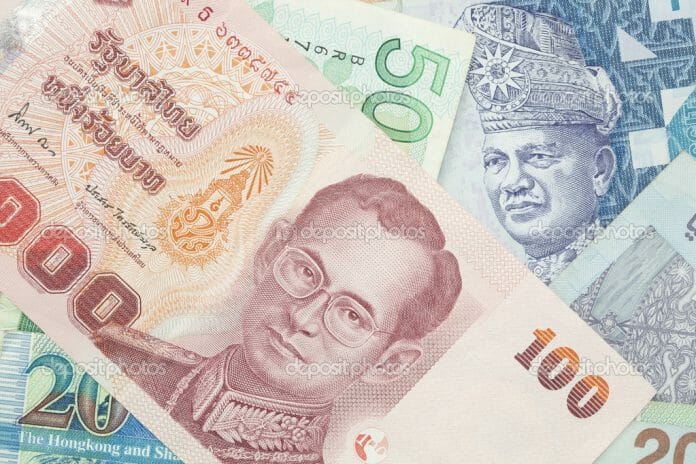By: Dr. Azian Madun
Currency, like other financial assets, is traded like a commodity, with the exchange rate varying as demand and supply meet at the equilibrium price. The theory of Efficient Market Hypothesis (EMH) can explain a variety of variables that influence exchange rates. Eugene Fama popularised the EMH, a century-old financial economics theory, earning him the Nobel Prize in 2013.
The EMH argues that a market is efficient when all information is reflected in price. The major assumptions required for this theory to work effectively are as follows: a) All market participants have easy and rapid access to information; and b) all market participants are rational. It suggests that any relevant information, including social and political factors, might influence price.
Currency exchange may have an influence on exports and imports, as well as prices of product and service. When the exchange rate rises, say from US$1=RM3 to US$1=RM4, the cost of imports increases, increasing the price of imported goods. However, as the rate rises, so will the amount of money gained from exports, even if the quantity remains unchanged. When the rate lowers, the cost of importing decreases, lowering the price of imported goods, while the earnings from exports would be reduced.
Essentially, the effect of an increase or decrease in exchange rate is a combination of positive and negative effects, which is not a serious concern when rates are predictable, or its volatility is under control. Excessive volatility will make it difficult for businesses to manage prices, resulting in major economic consequences. Likewise, businesses could face difficulties in the event of a lengthy devaluation or appreciation of the currency.
Unfortunately, this is what is happening with Ringgit Malaysia, as the currency exchange rate between Ringgit Malaysia and the US dollar has been increasing over the last decade, which is bad for the economy. The exchange rate has consistently increased from 2014 to the present, with a 55% variation in high and low. Among the members of ASEAN, Rupiah Indonesia has similar volatility, with a fluctuation range of about 45%. Although Baht Thailand is experiencing similar trend, it is less severe than Ringgit Malaysia and Rupiah Indonesia, where the fluctuation has been confined to 30% over the previous decade. Dollar Singapore is an example of a healthy and dynamic currency exchange, with the rate ranging around $S1.30 for one US dollar and a volatility rate of 20%.
GDP is a major economic information that calculates the total worth of all products and services produced within a country over a certain time, that provides a comprehensive assessment of a country’s economic activity. Malaysia’s GDP growth between 2015 and 2022 is equivalent to Singapore’s, but Indonesia’s growth outpaces the other three ASEAN countries. Although the GDP of all four countries has expanded year after year since 2015, the EMH suggests that this is not the only factor impacting the exchange rate.
Singapore has the highest government debt to GDP ratio (167%), followed by Malaysia and Thailand (60% each) and Indonesia (40%). Technically, a higher proportion means that the country is at risk of facing economic difficulties; nevertheless, Singapore is rated AAA by both Standard & Poor’s and DBRS, compared to A- for Malaysia, BBB+ for Thailand, and BBB for Indonesia. This is not at all surprising given that Singapore is ranked fifth as the least corrupt country, with Malaysia at 57th, Thailand at 108th, and Thailand at 115th, as reported by Transparency International.
It is evident that currency exchange is determined by more than just economic factors. While the Central Bank can intervene in the market by buying or selling its own currency to reduce or increase exchange rates, this is a temporary solution that cannot be sustained in the long run. If intervention is not supported by strong fundamentals in economics, politics, and ethics, its impact will gradually diminish.
So, the EMH underscores the need of having productive and sustainable businesses, as well as strong corporate and political governance, which will eventually increase trust in the government’s ability to sustain economic growth while also maintaining order and justice. When corruption is widespread, the cost of doing business increases because more funds are required for lobbying. When politics is chaotic, the cost of doing business increases because additional funds are required for contingencies.
In short, any information that indicate a decreased in productivity, or an increase in corruption and injustice, would be reflected in the exchange rate, which would be bad news for the currency’s purchasing power. News circulates faster as the world grows more connected, so any unfavourable news in terms of economics and governance will have a stronger influence on the value of money than in the past. It suggests that politics and economics are intricately intertwined, highlighting the need of competent governance.
To summarise, currency appreciation or depreciation is the driving force behind market dynamics. While the fluctuation of exchange rates is normal, the Ringgit’s continuous decline is a major issue that must be addressed. The market will continue to evaluate the Ringgit favourably as long as the economy and business are strong and functioning and governed by strong moral principles.
The depreciating currency is a problem for the economy; thus, policymakers and the business sector in this country must act in accordance with the spirit of accomplishing sustainable development goals.
The author is a Senior Lecturer at the Department of Syariah and Management, Academy of Islamic Studies, Universiti Malaya









